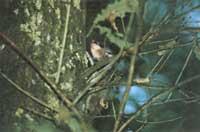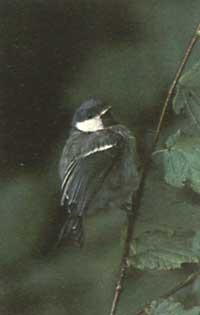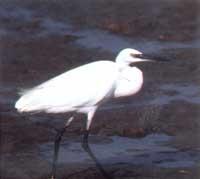Grey Liron, Forest Elf
1991/03/01 Aihartza, Joxerra Iturria: Elhuyar aldizkaria
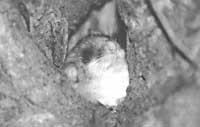
During the fall, who has been at night in our forests, will often hear the sounds produced by beech seeds or acorns falling to the ground. Many times these acorns fall by themselves, but sometimes it is an eccentric little animal that throws the empty surfaces of those seeds. In these cases, if we clarify our upper branches, we can see with some luck the gray liron.
The gray liron ( Glis glis) is a small mammal classified in the group of rodents. It can measure from head to year between 13 and 18 cm, while the hairy tail is between 12 and 15 cm. Its weight varies between 150 and 250 grams depending on the time of year. As for the appearance, although at first glance you can remember the rat or squirrel, if you look better you can say that the animal is totally different. Its skin is smooth, brown grey or silvery gray on its top, with whitish belly. His squirrel-like claws and long tail to maintain balance tell us about his arboreal life. In turn, its large black eyes, and long whiskers with tactile function, indicate that it is adapted to act in the dark.
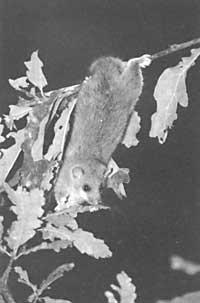
The grey liron is therefore the nightly relative of the squirrel. As for its habitat, it lives in forests of leafy and / or conifers, although it prefers beech and oak. You can also nest in parks, gardens and bargain of hamlets or bordas, as long as you have the possibility to get food nearby. It is a palearctic species, today present throughout Central Europe, extended from the east to Persia and Turkestet. In the south, the limit is the Mediterranean and in the Iberian Peninsula only has been observed in the Cantabrian side.
This curious little animal spends the day in some tree hole, or in some nest that he himself builds, and is not eliminated until dusk. No wonder, therefore, that in spite of its kind appearance, for most kaletarras it is totally unknown. With the night, however, the liron begins to work: it moves very quickly up and down the trees in search of food, and thanks to the wet and sticky cushions of the back feet, it is able to climb a little above the smooth surface. It is not surprising, therefore, that they reach the vaults of hamlets and embroideries that are in the vicinity of the forests, where they are assaulted.
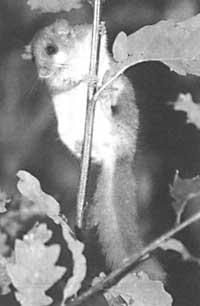
The liron is mostly a phytophagous animal, although sometimes it can eat insects and some small bird. In spring and summer they feed mainly sprouts, bark trees, leaves and other vegetable green parts. Starting in September, it looks mainly for the fruits that have been played in fats, thus accumulating sufficient reserves to face the long winter. At this time, therefore, it prefers acorn, beech seeds, hazelnuts and other nuts with fats, and its high energy value makes the liron fattening reaching the greatest weight of the year.
From November, and with the arrival of the first frosts, the liron is ready to hibernate. Then you look for a dry and soft tree, where it is kept, rolling the body and covering the head and neck with hairy tail that gets into winter sleep. From that moment on, the animal's metabolism is limited to minimum values: its internal temperature drops from 35 to 1 Channel C and its heart beats per minute are reduced from 450 to 35.
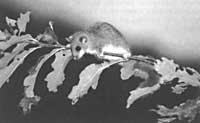
In turn, the breathing rate is also extremely low, with only one inspiration per hour. However, the response to the animal's metabolism is very fast and the metabolic values recover quickly by increasing the outside temperature. By May, once the hibernation is over, the animal has lost 50% of its weight and exhausted all the fat reservoirs. Therefore, winter imposes a rigorous selection on the population of lirones. Specimens that have not accumulated enough reserves, or young lirones that have been born too late, are not able to withstand a long winter sleep and do not reach spring.
The zeal begins about a month after leaving the hibernation, when you can hear the whining cries of the animal. Gestation can last between 30 and 32 days and the only breeding of the year occurs during the month of August and the first weeks of September, being able to last between 3 and 9 offspring per breeding, although the most normal number is 5-6.
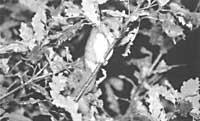
Among the natural enemies of the liron are the marten ( Tuesday) and the great nocturnal predators like the owl ( Bubo bubo), the medium owl ( Asio otus) and the urubia ( Strix aluco). In addition, man has long been tanned, both for the delicate and sweet nature of his flesh and for the healing virtues inherent in his fats, which have been used to make antirheumatic drugs. Nowadays, however, the hunting of the liron is prohibited in Euskal Herria, and if we keep healthy the puff forests that are part of its main habitat, this beautiful leprechaun of the jungles will accompany us for a long time. So be it!

Gai honi buruzko eduki gehiago
Elhuyarrek garatutako teknologia




